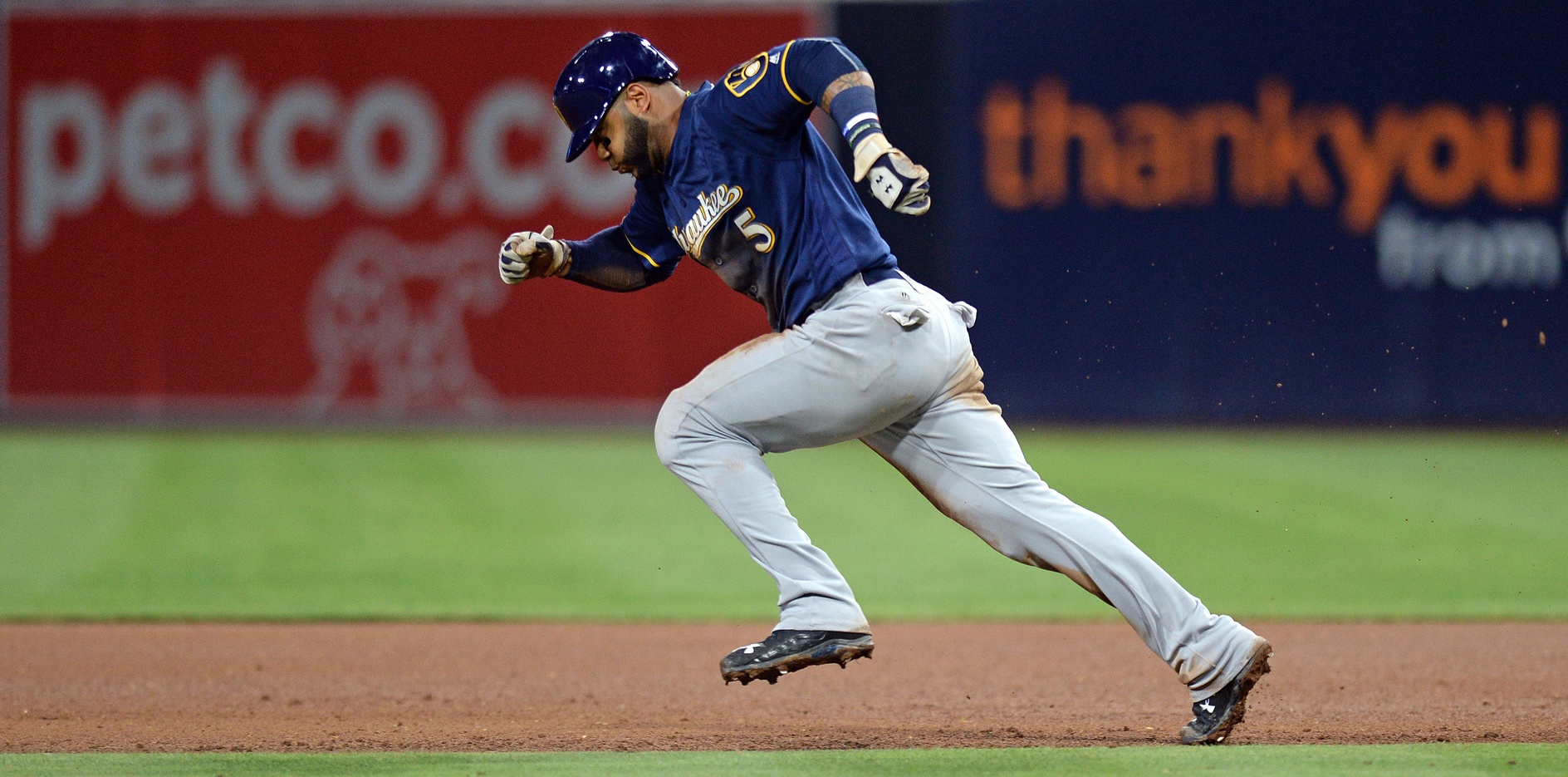Jonathan Villar made another baserunning error this past weekend, and his gaffes on the base paths have become common this season. While the specific errors he is making are obviously not the difference between the Brewers being in and out of the playoffs, they are still worrying because seasons like this one are at least partially useful for building winning habits. And whether or not Villar is in the Brewers’ future plans, he simply cannot make this many mistakes.
Baserunning itself has a weird value in the game. It is extraordinarily visible so mistakes seem to be magnified, but there simply isn’t that much difference between the best and worst baserunners. This is likely because the margins are so small; all players can score from second on doubles in the gap, and nearly no one is going to score from second on a routine ground ball to an infielder. Instead, players are dependent on exploiting small advantages for their value, and those opportunities simply do not arise very often.
Stolen bases are the most visible aspect of baserunning, so they are also likely one of the biggest determining factors in a player’s overall baserunning value. They are the aspect of baserunning that is most dependent on skill; good base stealers can in fact steal bases, and bad ones cannot. This gives the extra base gained when stealing more weight than simply going first-to-third because the range of players that can steal bases is much smaller.
It is for this reason that Villar’s baserunning struggles are so incredible. He is currently second in all of baseball with 50 steals this year, and yet he is a negative baserunner overall according to the BaseballProspectus BRR statistic. This is in direct contrast to the players around him on the stolen base leaderboard: Villar is a -2.9 on the basepaths, while Billy Hamilton is +11.2, Starling Marte is +5.2, Rajai Davis is +3.7, and Eduardo Nunez is +4.9.
While other statistics show that Villar is a positive baserunner, BRR includes additional categories that define Villar’s performance. BRR is comprised of a player’s Stolen Base Runs and Hit Advancement Runs, as well as Ground Advancement Runs, Air Advancement Runs, and Other Advancement Runs. These statistics judge players by expected runs created by the quality and number of baserunning opportunities.
When looking at Villar’s troubles in a more historical context, his struggles become even more pronounced. The full list of expansion-era players who have played at least 100 games in the middle of the diamond (shortstop, second base, or center field), have stolen at least fifty bases, and have a baserunning value worse than even -1 is Villar this year, Alex Sanchez in 2003, Eric Young in 1999, and Harold Reynolds in 1987.
This is an incredibly small list, and for that it is noteworthy. Good base-stealers are almost always good baserunners, if for no other reason than they are necessarily fast. But Villar is in rarified air this season, as the above list shows: only three other players have ever stolen fifty bases and been this bad overall on the basepaths.
One of the issues here is that there isn’t a great way to fix this other than to urge Villar to use better judgment. Baserunning blunders aren’t generally mechanical errors (unless one is caught leaning and picked off), and so there isn’t necessarily a quick fix. Instead, Villar is the one who control his destiny in this area. He simply needs to make better decisions.
That is a frustrating place to be in as an organization. It is possible that Craig Counsell simply is not getting through to Villar, but that’s unlikely; after all, Villar is otherwise having a career year as his .291 TAv and 3.7 WARP far outstrip his career marks. However, there isn’t a clear explanation of why exactly Villar would be struggling so much on the bases. This issue is almost entirely within his head, so I don’t know that there is a way to truly evaluate what is going on.
There also probably isn’t a way to fix it other than hope it resolves itself over time. Fortunately, though, baserunning is so small a part of a player’s overall value that this doesn’t have a very large impact on Villar’s overall value. But it is concerning, and margins this small can make the difference in playoff races, so the Brewers will be hoping this issue fixes itself quickly.

It’s amusing that of the four 50-SB/(<-1)-BRR players, three played for the Brewers (of course Young did not during the year he accomplished it).
I was amazed to hear on a Brewer broadcast earlier in the season Villar had made a bet with S Marte as to who would steal the most bases. That was all the explanation I needed as to why Villar would try to steal 3B with 2 out and Braun or Lucroy up. Then, while playing the Pirates in July, Villar stole 2B to go 2 up on Marte, and turned to the Pirate outfielder and held up 2 fingers. As incredible as it seems this may be the motivation “in his head” for the stolen base performance.
That’s fantastic! Baseball players are quite a fun bunch.
50 SB and 16 CS is actually a pretty good SB rate and according to Fangraphs, he is +1.9 runs in “other” base running (advancing extra bases, getting thrown out on the bases, etc.).
So…
Correct. But BP’s stat also includes running on additional plays, such as outs made on groundballs. BP is also judging baserunning based on runs expected, which also may account for differences.